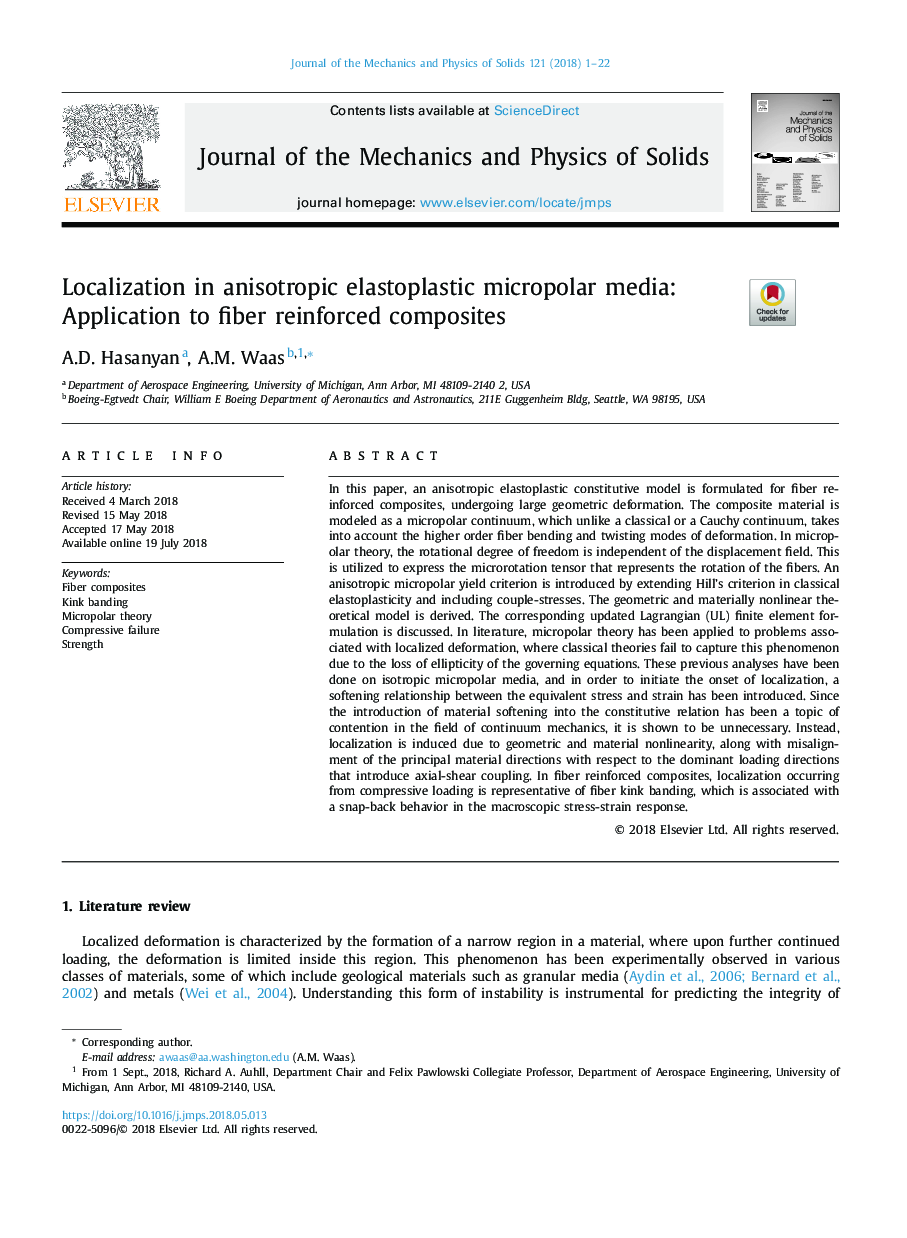| Article ID | Journal | Published Year | Pages | File Type |
|---|---|---|---|---|
| 7177324 | Journal of the Mechanics and Physics of Solids | 2018 | 22 Pages |
Abstract
In this paper, an anisotropic elastoplastic constitutive model is formulated for fiber reinforced composites, undergoing large geometric deformation. The composite material is modeled as a micropolar continuum, which unlike a classical or a Cauchy continuum, takes into account the higher order fiber bending and twisting modes of deformation. In micropolar theory, the rotational degree of freedom is independent of the displacement field. This is utilized to express the microrotation tensor that represents the rotation of the fibers. An anisotropic micropolar yield criterion is introduced by extending Hill's criterion in classical elastoplasticity and including couple-stresses. The geometric and materially nonlinear theoretical model is derived. The corresponding updated Lagrangian (UL) finite element formulation is discussed. In literature, micropolar theory has been applied to problems associated with localized deformation, where classical theories fail to capture this phenomenon due to the loss of ellipticity of the governing equations. These previous analyses have been done on isotropic micropolar media, and in order to initiate the onset of localization, a softening relationship between the equivalent stress and strain has been introduced. Since the introduction of material softening into the constitutive relation has been a topic of contention in the field of continuum mechanics, it is shown to be unnecessary. Instead, localization is induced due to geometric and material nonlinearity, along with misalignment of the principal material directions with respect to the dominant loading directions that introduce axial-shear coupling. In fiber reinforced composites, localization occurring from compressive loading is representative of fiber kink banding, which is associated with a snap-back behavior in the macroscopic stress-strain response.
Related Topics
Physical Sciences and Engineering
Engineering
Mechanical Engineering
Authors
A.D. Hasanyan, A.M. Waas,
